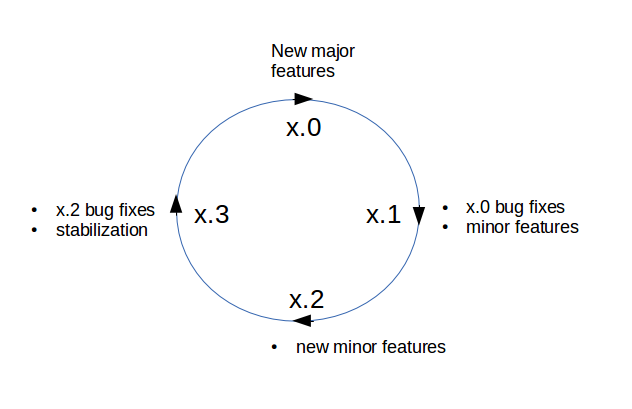-
Notifications
You must be signed in to change notification settings - Fork 2
Release Management
Effective release management begins by controlling the process through formalized steps to plan, schedule, control and approve releases. Several of the tasks involved in controlling the process benefit substantially from automation.
- It creates an opportunity to meaningfully discuss nonfunctional testing that the software may need.
- It announces a timetable for when stakeholders can expect to get some functionality. If they know that functionality will be regularly released, they can get on with agreeing what that functionality will be.
- It creates a routine with which all teams can align (including marketing and engineering).
- It gives customers confidence that they can order something and it will be delivered
Aim is to make major release every year. In between aim is to make 2-3 smaller releases. Whether it is two or three is up to the Development Streering Group to decide.

- Major version x.0 will be released in January.
- Version x.1. around March (bug fixes mainly for x.0),
- version x.2. in June (smaller new eatures) and
- version x.3. in September-October (again bug fixes but now for x.2.)
Automation enables you to do repetitive tasks without tying up valuable human resources. Standardizing ensures that your automation's inputs and outputs are consistent every time. We need to define structure and acceptance criteria for the deployable platform we are delivering.
- What are the criteria?
Intention is that we can offer some kind of roadmap and predictability for the participating companies. This is achieved by having public product backlogs for each version - past, current and future.
-
Current version roadmap
-
older versions...